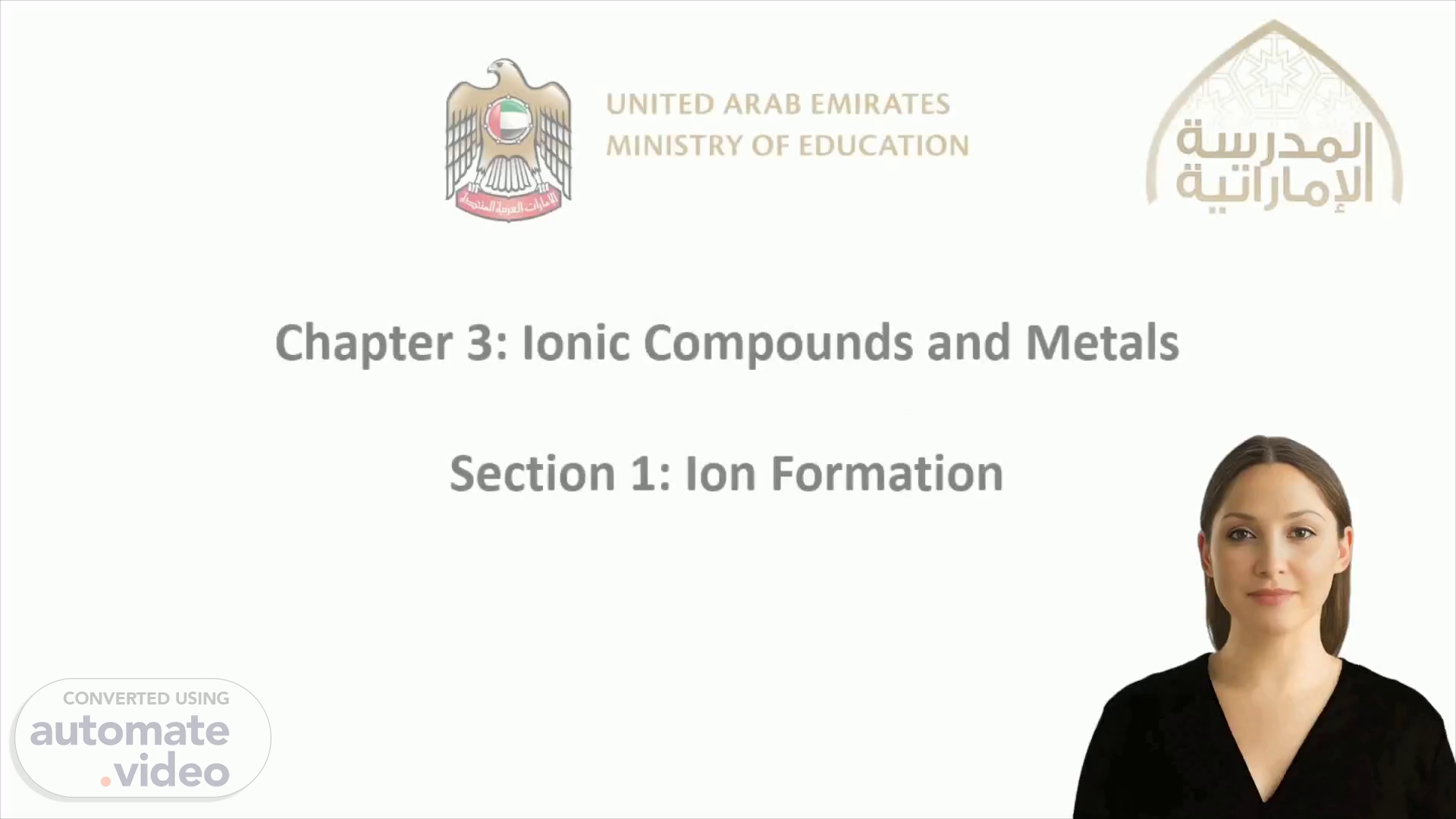
PowerPoint Presentation
Scene 1 (0s)
[Virtual Presenter] Velkommen til Al-Rashidiyah School. Vi er her for at lære om, hvordan metaller danner cationer og ikke-metaller danner anioner for at opnå Øktreglen ved at have 8 elektroner i deres yderskal og blive stabile..
Scene 2 (15s)
Starter. 2 minutes Vector Clip Art EPS Images. 401 2 minutes clipart vector illustrations available to search from thousands of royalty free illustration and stock art designers..
Scene 3 (1m 17s)
[Audio] In chemistry class, we will explore Ionic Compounds and Metals. We'll start by defining chemical bonds: these are interactions between atoms that enable them to form molecules. We will then look at two particular particles, called cations and anions. Cations are positively charged particles, while anions are negatively charged particles. The interactions between these particles form ionic bonds, which are bonds between particles of opposite charge. We will discuss the properties of cations and anions, as well as the many practical applications of ionic compounds. It's important to remember the terminology from this lesson: chemical bonds, cations, and anions..
Scene 4 (2m 10s)
[Audio] Atoms can create ions by either gaining or losing electrons, resulting in a net negative charge for anions or a net positive charge for cations. In this section, we investigate how atoms create ions and how ions interact to build ionic compounds and metals..
Scene 5 (2m 29s)
[Audio] Ionic compounds are formed when metals and non-metals interact. The metal atom will become a cation, or positively charged ion, by losing electrons, while the non-metal atom will become an anion, or negatively charged ion, by gaining electrons. This transfer of electrons is known as the octet rule, as these elements aim to achieve stability with eight electrons in their outer shell. To illustrate, the element sodium, represented as Na, forms a cation with a positive charge by losing an electron, and fluorine, represented as F, forms an anion with a negative charge by accepting an electron..
Scene 6 (3m 11s)
[Audio] Hej alle sammen. Vi skal tale om ioner og metaller. En kemisk binding er en fysisk forbindelse mellem to eller flere atomer. Metaller danner positive ioner, mens ikke-metaller danner negative ioner. Husk når du studerer kemien, at metaller danner positive ioner og ikke-metaller danner negative ioner..
Scene 8 (3m 41s)
[Audio] Velkommen tilbage! I denne anden sektion af kapitel 3 går det om dannelsen af ioner. Vi ved, at atomer har en tendens til at opnå Octet Rule ved at have 8 elektroner i deres ydre skal, hvilket gør dem stabile. Dette opnås ved at vinde eller miste elektroner, dvs. at der dannes ioner..
Scene 9 (4m 3s)
[Audio] Velkommen tilbage til vores præsentation. Det er slide nummer ni. Vi diskuterer iondannelse og metaller i kapitel tre. For at opnå øget stabilitet skal atomer have otte elektroner i deres ydre skal. Det er hvordan et atom opnår stabilitet ved at få otte elektroner i deres ydre skal..
Scene 10 (4m 26s)
Cl need 1 electron. 1s2 2s2 2p6 3s2 3p5. Cl-. Na has extra electron.
Scene 11 (4m 54s)
[Audio] Good morning, students. As we are discussing ionic compounds and metals, it's important to understand how ions are formed. An atom is considered stable when its outermost shell, or valence electrons, are filled, as the atom will seek to reach this state of stability. We can reach this state by either gaining or losing electrons. Let's take two examples: fluorine, which has nine protons, and potassium, which has nineteen protons. Fluorine has two electrons in its outermost shell, while potassium has four, meaning potassium has to lose two electrons in order to reach its state of stability. On the other hand, fluorine needs to gain one electron in order to fill its valence shell and become stable. That's how ions are formed, and you can apply this to any metal or non-metal element..
Scene 12 (5m 53s)
Similarity with noble gases: all the sublevels are full. Difference with noble gases: it does not have 8 electrons in its valence subshell..
Scene 13 (6m 4s)
[Audio] Good morning students. On this slide, we're going to discuss ion formation. Oxygen gains two electrons to form what? The answer is anion. Elements with a full octet have which configuration? The answer is noble gas configuration. This is important to remember, as it plays a role in understanding ion formation..
Scene 14 (6m 33s)
Quizziz – Ion Formation.
Scene 15 (6m 39s)
[Audio] Discussing ion formation and its implications in the reaction of metals and non-metals, chlorine and sodium provide an interesting case study. Chlorine, a non-metal, has 17 protons with its outermost shell having two electrons in its s orbital and six electrons in its p orbital. To complete its outermost shell, chlorine must gain an electron when it reacts with another element. Unlike chlorine, sodium is a metal with 11 protons and its outermost shell having one electron in its s orbital and six electrons in its p orbital. To form an ion bond, sodium must give away its extra electron to make its outermost shell full. This example demonstrates the relationship between metals and non-metals in chemical reactions and the understanding of the structure of these elements and their ability to form ionic bonds..
Scene 16 (7m 35s)
One single information about today’s lesson in the chat box please.